For centuries, the jade pendant has held a special place in jewelry traditions around the world. Especially revered in Chinese, Mesoamerican, and Maori cultures, this elegant piece combines natural beauty with deep symbolic meaning. Crafted from either nephrite or jadeite, a jade pendant is more than just an accessory—it carries spiritual energy, protection, and cultural identity.
Moreover, jade is known for its smooth texture and rich green hues, though it also comes in white, lavender, yellow, and black tones. Artisans shape it into intricate designs, often symbolizing luck, longevity, or harmony. Many people wear a jade pendant to attract positive energy or honor their heritage. It can be passed down through generations as a family heirloom.
Additionally, modern fashion has embraced the jade pendant for its timeless elegance. Whether paired with casual outfits or formal attire, it adds a touch of sophistication. Its popularity continues to grow as more individuals seek meaningful, ethically sourced jewelry. In this article, we’ll explore the history, symbolism, types, and care of the jade pendant, helping you appreciate its lasting value.
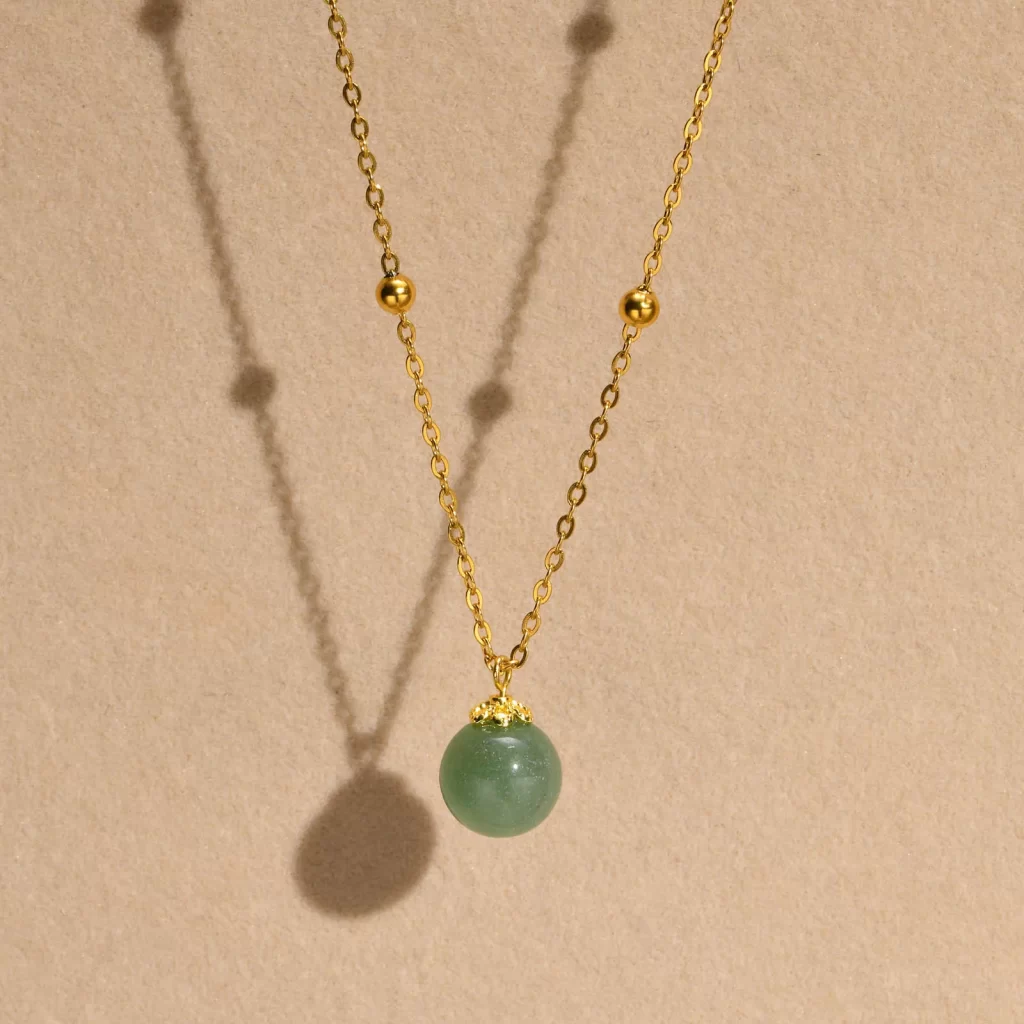 Historical Significance of the Jade Pendant Across Civilizations
Historical Significance of the Jade Pendant Across Civilizations
The jade pendant has played a vital role in human history for over 7,000 years. Ancient Chinese civilizations considered jade more valuable than gold or silver. Emperors and nobles wore jade pendants as symbols of power and virtue. These pieces were often buried with the dead to ensure safe passage to the afterlife.
Similarly, the Maya and Olmec peoples of Central America carved jade into sacred amulets. They believed the stone connected them to gods and nature. Priests and rulers wore jade pendants during religious ceremonies. The color green represented life, water, and fertility in their cosmology.
In New Zealand, the Maori people crafted hei-tiki pendants from pounamu, a form of nephrite jade. These were worn as tribal talismans and passed down through families. Each jade pendant told a story of ancestry and spiritual protection.
Trade routes helped spread jade across continents. Chinese merchants exchanged it along the Silk Road. As a result, its influence reached far beyond its origins. Even today, many cultures view the jade pendant as a bridge between the physical and spiritual worlds.
Because of its enduring legacy, the jade pendant remains a powerful cultural artifact. It reflects humanity’s long-standing respect for nature and craftsmanship.
Symbolic Meanings Behind Wearing a Pendant
Wearing a jade pendant is not just about style—it’s about intention. In feng shui, jade attracts balance, peace, and prosperity. People often choose a jade pendant to invite harmony into their homes and relationships. Its calming energy helps reduce stress and promote emotional stability.
Additionally, jade symbolizes purity and moral integrity. Confucian teachings linked the stone to virtues like wisdom, justice, and compassion. A jade pendant thus serves as a personal reminder to live with honesty and kindness.
Many believe the stone offers physical protection. Warriors once wore jade pendants into battle to guard against injury. Today, parents give them to children as protective charms. Some even carry a small jade pendant in their pocket for daily safety.
Love and fertility are other common associations. Couples exchange jade pendants as tokens of commitment. In some traditions, brides wear them on their wedding day to bless the union with long-lasting happiness.
Spiritually, jade enhances clarity and intuition. Meditators use jade pendants to deepen focus and connect with inner truth. Because it resonates with the heart chakra, it supports emotional healing.
Overall, the jade pendant carries layered meanings. Whether worn for luck, love, or legacy, it connects the wearer to deeper values and beliefs.
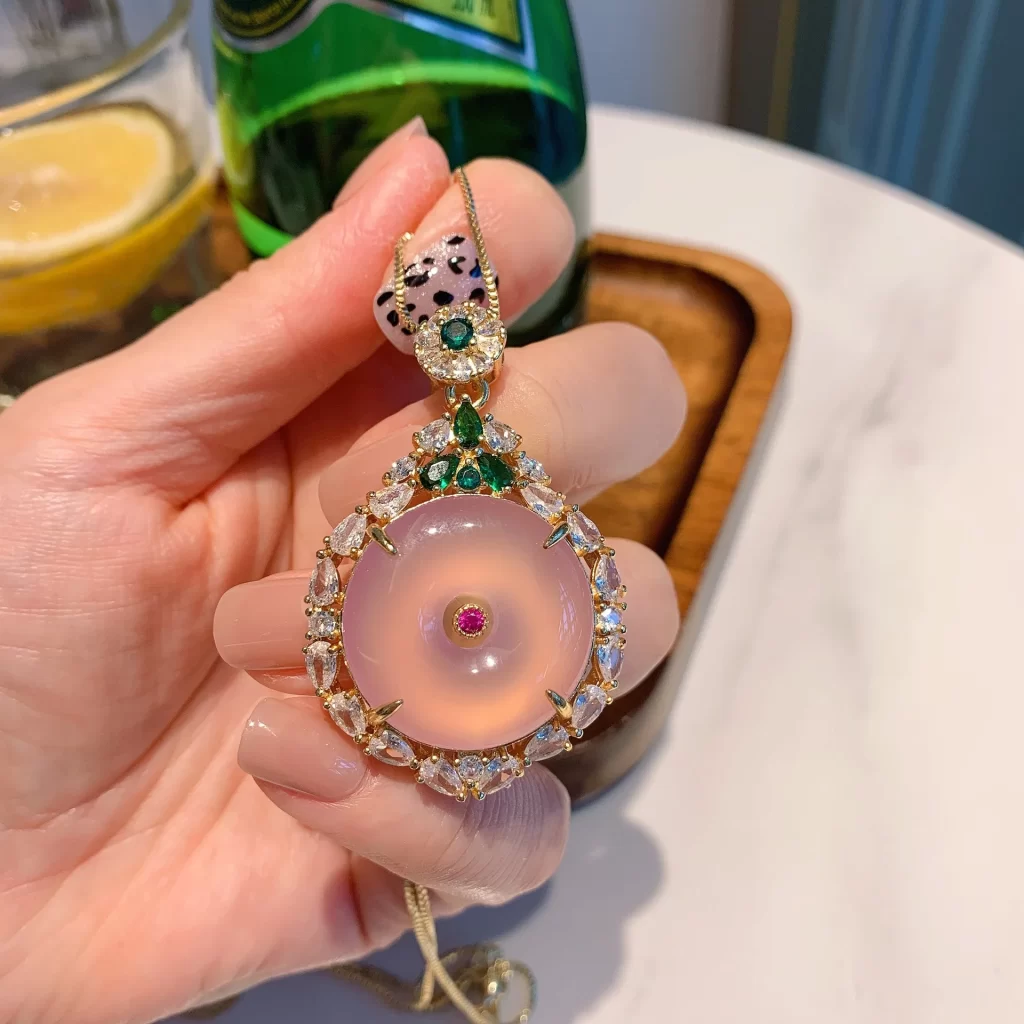 Types of Jade Used in Crafting a High-Quality Pendant
Types of Jade Used in Crafting a High-Quality Pendant
Not all jade is the same. Two minerals are recognized as true jade: nephrite and jadeite. Each produces a unique type of jade pendants with distinct qualities. Understanding the difference helps buyers make informed choices.
Nephrite is the older, more widely available form. It ranges from creamy white to deep spinach green. This type is tougher and less brittle, making it ideal for carving detailed designs. Most traditional Chinese jade pendants are made from nephrite.
Jadeite, on the other hand, is rarer and often more valuable. It comes in vibrant colors, including imperial green, lavender, and red. The most prized variety is “imperial jade,” known for its intense hue and translucency. Collectors highly seek jade pendants made from high-grade jadeite.
Transparency plays a key role in quality assessment. The best jade pendants allow light to pass through softly, creating a glowing effect. Opaque stones may still be beautiful but are generally less expensive.
Texture matters too. High-quality jade feels smooth and cool to the touch. It should have a waxy or glassy luster when polished. Cracks, bubbles, or uneven coloring can indicate lower grade material.
Authenticity is crucial. Some sellers offer dyed quartz or glass as jade. Always buy from trusted sources that provide certification. A genuine jade pendant will last a lifetime and increase in sentimental value.
How to Choose the Right Jade Pendants for Your Needs
Selecting the perfect jade pendants involves more than just aesthetics. First, consider the purpose. Are you wearing it for fashion, spiritual reasons, or as a gift? This helps narrow down design and size options.
Next, examine the color. Green is classic, but lavender and white jade offer subtle elegance. Choose a shade that complements your skin tone and wardrobe. Bright imperial green makes a bold statement, while muted tones suit minimalist styles.
Check the cut and craftsmanship. Well-carved jade pendants have clean lines and balanced proportions. Common shapes include dragons, butterflies, coins, and the yin-yang symbol. Each carries its own meaning—dragons represent power, while butterflies symbolize transformation.
Pay attention to the setting and chain. Sterling silver, gold, or silk cords are popular choices. Make sure the bail (the loop that holds the chain) is secure and proportional to the pendant.
Size is another factor. Smaller jade pendants work well for everyday wear. Larger pieces make striking centerpieces for special occasions. Consider how it will sit on your chest and whether it matches your necklines.
Finally, trust your intuition. Many believe that jade chooses the wearer. If a particular jade pendant draws your attention, it may be the right one for you.
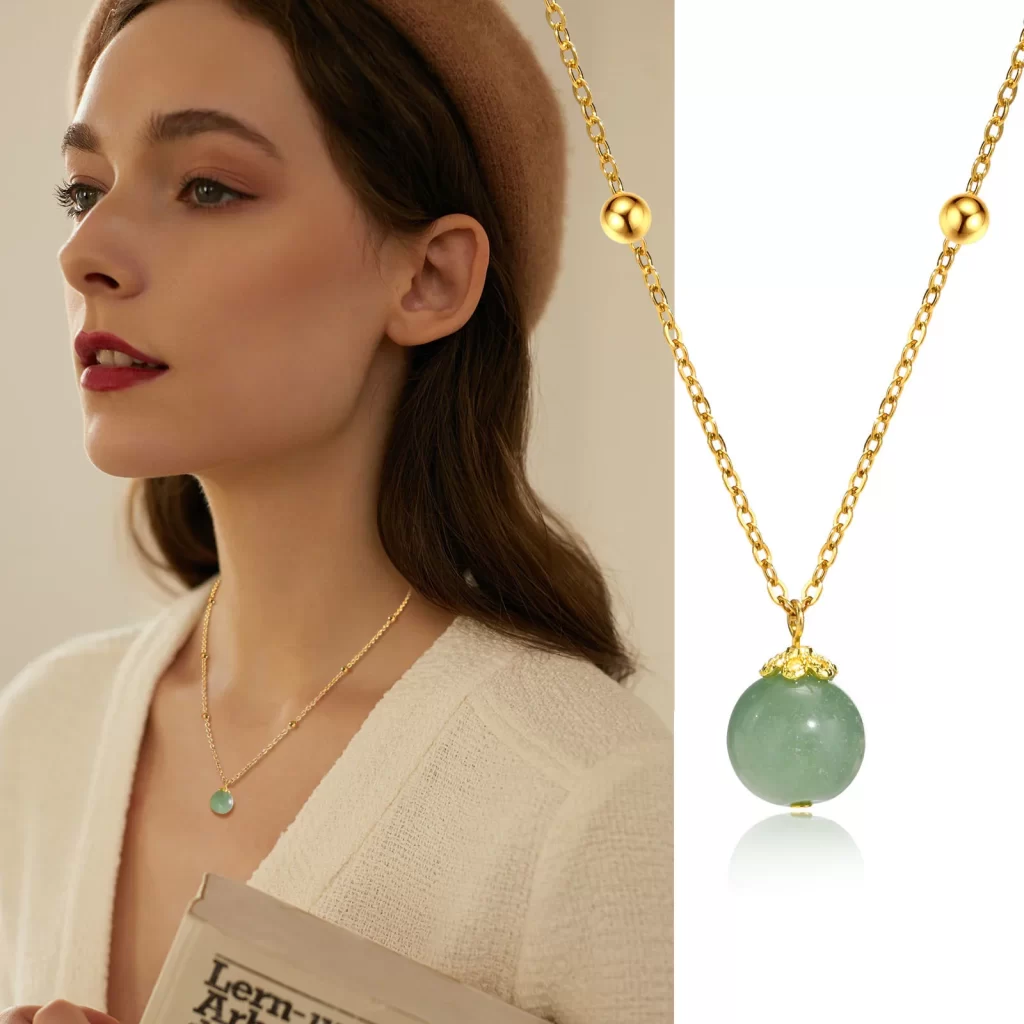 Caring for Your Pendant to Preserve Its Luster
Caring for Your Pendant to Preserve Its Luster
A jade pendant requires gentle care to maintain its beauty. First, avoid exposing it to harsh chemicals. Perfumes, lotions, and cleaning agents can dull the surface over time. Always put on your jewelry after applying cosmetics.
Clean the jade pendants regularly with lukewarm water and mild soap. Use a soft cloth to wipe away dirt and oils. Never use ultrasonic cleaners or steam devices—they can damage the stone.
Store it separately from other jewelry. Harder gems like diamonds can scratch jade if they rub together. Keep your jade pendants in a fabric-lined box or pouch.
Avoid extreme temperatures. Sudden changes can cause cracks. Do not leave the jade pendants in direct sunlight for long periods. Heat may fade the color, especially in dyed stones.
Recharge its energy periodically. Some people place their jade pendants under moonlight overnight. Others bury it in rice or near crystals like amethyst. These practices are believed to restore its protective properties.
Inspect the cord or chain monthly. Replace frayed silk threads or worn metal links promptly. A secure hold ensures the jade pendant stays safe during daily wear.
With proper care, a jade pendant can remain radiant for decades. It becomes not only a treasured accessory but also a lasting legacy.
Modern Fashion Trends Featuring the Pendant
Today’s fashion embraces the jade pendant as both a cultural icon and a stylish statement. Designers incorporate it into luxury collections and streetwear alike. Celebrities and influencers often wear jade pendants at red carpet events and on social media.
Layering necklaces is a popular trend. A jade pendant pairs beautifully with delicate gold chains or other gemstone pieces. This creates a personalized, bohemian look. Minimalist wearers prefer a single, small jade pendant on a thin chain.
Gender-neutral styles are rising. Men increasingly wear jade pendants on leather cords or braided bracelets. These designs reflect strength and calm—qualities traditionally associated with the stone.
Sustainable fashion also favors jade. Unlike mined diamonds, jade can be ethically sourced with lower environmental impact. Many brands highlight this in their marketing, appealing to eco-conscious buyers.
Customization is another growing trend. Engraved initials, zodiac symbols, or family crests add personal meaning to a jade pendant. Artisans blend ancient techniques with modern aesthetics to meet demand.
Even bridal fashion includes jade pendants. Brides wear them as “something old” or cultural tribute. Their natural elegance complements lace gowns and floral crowns.
As global interest in mindful living grows, so does the appeal of the jade pendant. It stands out as a symbol of authenticity in a fast-fashion world.
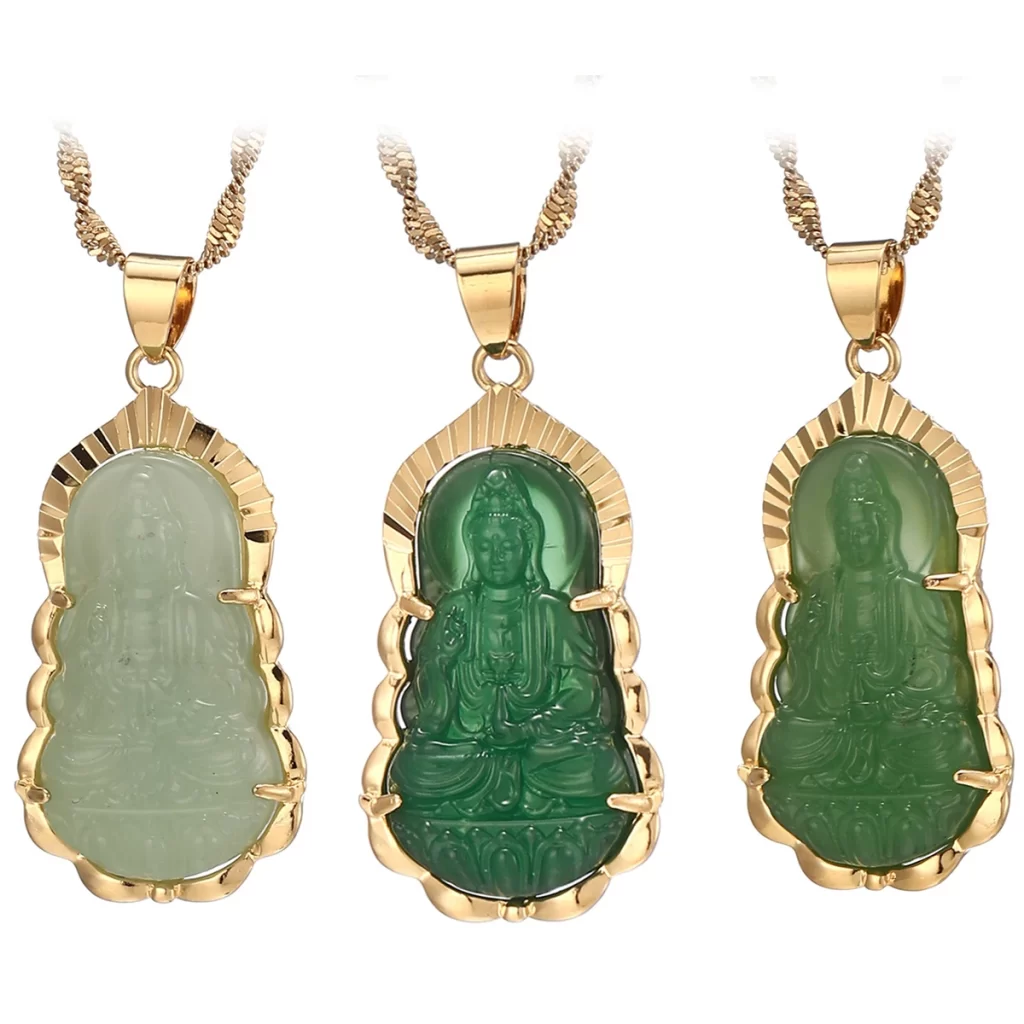 Frequently Asked Questions About Pendants
Frequently Asked Questions About Pendants
Is a jade pendant suitable for daily wear?
Yes, jade is durable and perfect for everyday use. Just avoid impacts and harsh chemicals.
How can I tell if a jade pendant is real?
Look for smooth texture, consistent color, and slight translucency. Get a gemological certificate if possible.
Can I wear a jade pendant in the shower?
No, prolonged water exposure can weaken cords and dull the stone. Remove it before bathing.
What does a cracked jade pendant mean?
Some believe it absorbed negative energy and sacrificed itself. Others see it as normal wear.
Should I cleanse my jade pendant regularly?
Yes, wiping it with a soft cloth helps. Some also use moonlight or sound cleansing for spiritual renewal.
Are there different meanings for jade colors?
Green means harmony, white stands for purity, and lavender represents spirituality. Choose based on intention.
Can men wear a jade pendant?
Absolutely. Jade has no gender restrictions. Many men wear it for protection and balance.
Does the size of the jade pendant matter?
Larger pendants make bolder statements. Smaller ones are subtle and elegant. Pick what suits your style.
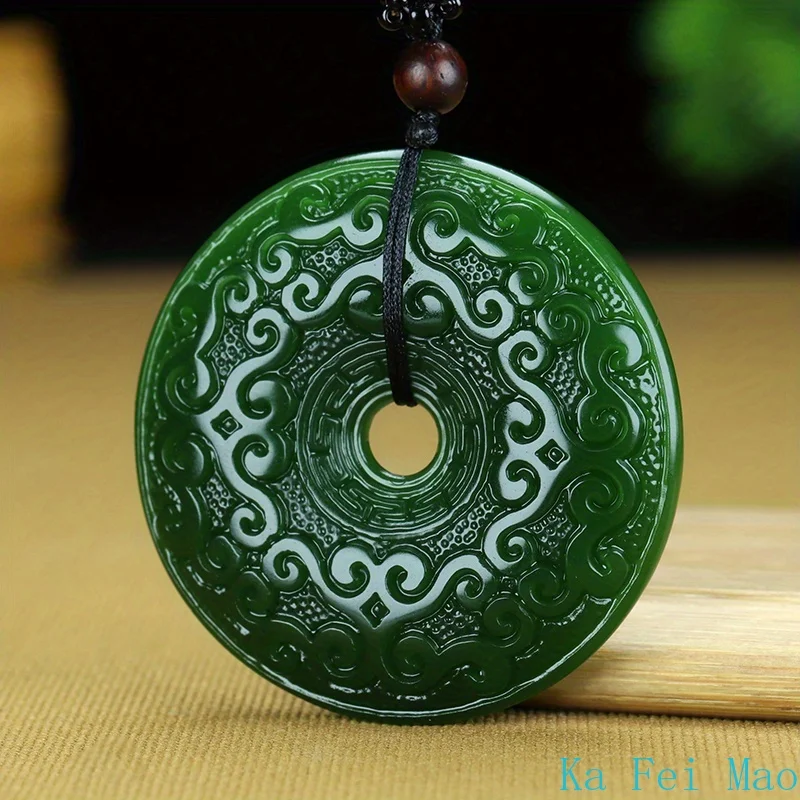 Final Thoughts: Why the Jade Pendant Remains a Cherished Treasure
Final Thoughts: Why the Jade Pendant Remains a Cherished Treasure
The jade pendant continues to captivate hearts across generations and continents. Its blend of natural beauty, cultural depth, and spiritual significance sets it apart from ordinary jewelry. Whether worn for luck, love, or legacy, it carries a quiet power that resonates deeply.
Moreover, the jade pendant bridges tradition and modernity. It honors ancient customs while adapting to contemporary fashion. Its timeless appeal ensures it never goes out of style.
Owning a jade pendant means more than possessing a gem—it means embracing a philosophy of balance, resilience, and grace. With proper care, it can become a cherished heirloom, passed from one generation to the next.
In a world full of fleeting trends, the jade pendant stands as a symbol of permanence and meaning. If you’re seeking a piece that speaks to both heart and heritage, the jade pendant is an exceptional choice.